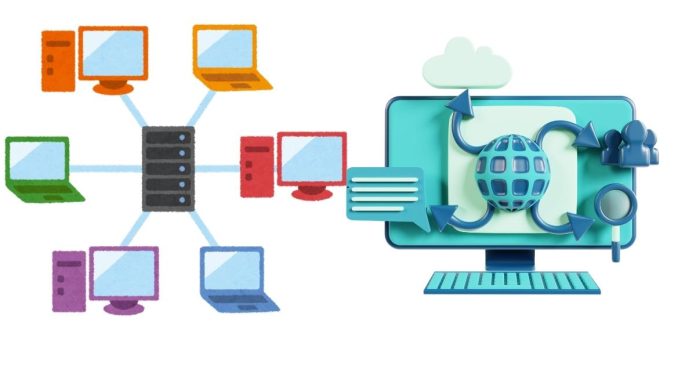The Internet Protocol version 4 (IPv4) is one of the most widely used protocols in computer networking. It plays a crucial role in delivering packets of data across different networks and devices on the internet. At the heart of IPv4 is its header, which contains essential information to ensure the proper routing and delivery of data.
In this blog post, we’ll break down the components of the IPv4 header and understand how each part contributes to the smooth operation of network communication.
What is the IPv4 Header?
The IPv4 header is a structured part of an IPv4 packet. It contains information required to forward the packet across the network, including source and destination IP addresses, packet length, and various flags. The IPv4 header is placed before the actual data (payload) in a packet, and it helps routers, switches, and other devices process the packet efficiently.
IPv4 Header Structure
The IPv4 header is a fixed-size 20-byte (or more, if options are included) structure that consists of several fields. Below is the breakdown of each field:
- Version (4 bits)
This field specifies the version of the IP protocol being used. For IPv4, the version is always set to 4. - IHL (Internet Header Length) (4 bits)
This field indicates the length of the IPv4 header in 32-bit words. The minimum value for this field is 5 (indicating a 20-byte header). If there are any additional options in the header, the IHL field will reflect the increased size. - Type of Service (ToS) (8 bits)
The Type of Service field defines the priority and handling requirements of the packet. It includes precedence, delay, throughput, and reliability requirements, helping routers make informed decisions about routing traffic. - Total Length (16 bits)
This field specifies the total length of the IPv4 packet, including the header and the data (payload). The maximum possible value is 65,535 bytes. - Identification (16 bits)
This field is used for packet fragmentation. If a packet is too large to be transmitted in a single unit, it is split into smaller fragments, each having the same identification value. The receiver will use this value to reassemble the fragments correctly. - Flags (3 bits)
The flags field contains control information related to packet fragmentation. The three bits in this field are:- Bit 0: Reserved (must be 0)
- Bit 1: Don’t Fragment (DF) — If set to 1, the packet should not be fragmented.
- Bit 2: More Fragments (MF) — If set to 1, it indicates that more fragments follow this packet.
- Fragment Offset (13 bits)
This field indicates the position of a fragment in the original packet, in units of 8 bytes. It helps the receiver reassemble the fragmented packet correctly. - Time to Live (TTL) (8 bits)
The TTL field specifies the maximum number of hops (routers) the packet can pass through before being discarded. This prevents packets from circulating endlessly in the network. - Protocol (8 bits)
This field specifies the protocol used in the data portion of the IP packet. For example:- 1 = ICMP (Internet Control Message Protocol)
- 6 = TCP (Transmission Control Protocol)
- 17 = UDP (User Datagram Protocol)
- Header Checksum (16 bits)
The checksum is used for error detection. It is a value calculated over the header to ensure that the data hasn’t been corrupted during transmission. If the checksum doesn’t match when the packet reaches its destination, the packet is discarded. - Source IP Address (32 bits)
This field contains the 32-bit address of the sender (source) of the packet. It is used by routers to know where the packet came from and for the destination to reply. - Destination IP Address (32 bits)
This field holds the 32-bit address of the destination device. Routers use this address to forward the packet toward its destination. - Options (Variable length)
This field is optional and may be included to provide additional functionality, such as security features or timestamping. The presence of options increases the size of the IPv4 header beyond the standard 20 bytes. - Padding (Variable length)
If the total header size is not a multiple of 32 bits, the padding field is added to ensure proper alignment.
Conclusion
The IPv4 header is essential for routing and delivering data across networks. Each field in the header serves a unique purpose to ensure that data packets are properly processed and transferred from the source to the destination. By understanding the structure of the IPv4 header, network engineers and IT professionals can troubleshoot network issues, optimize performance, and ensure reliable communication across the internet.
As we move towards IPv6 due to the exhaustion of IPv4 addresses, understanding the mechanics of the IPv4 header remains fundamental, as many systems still rely on this protocol. With the foundation of IPv4’s header structure in mind, one can better appreciate the intricacies of network communication and the challenges that come with managing and securing modern networks.


